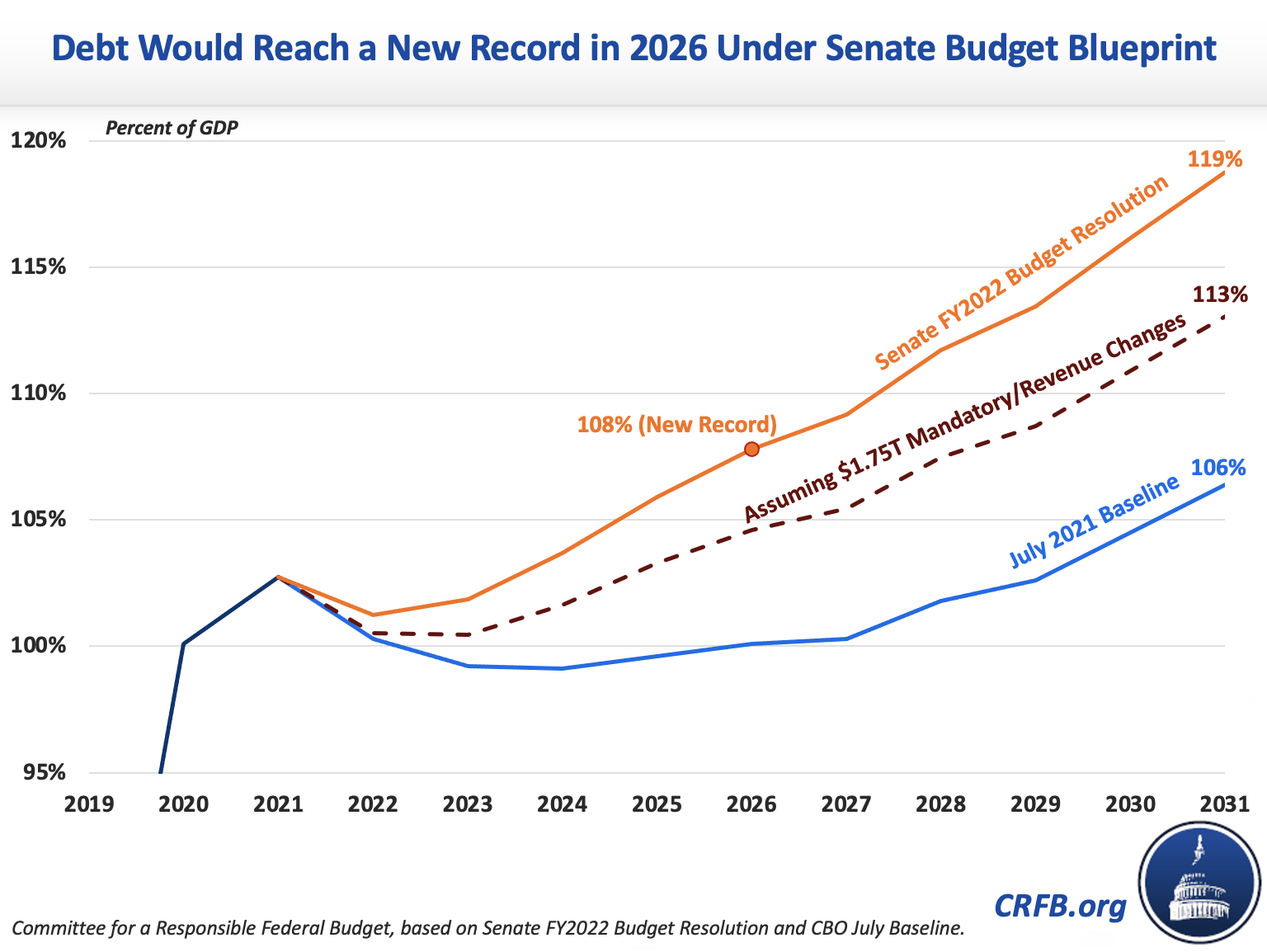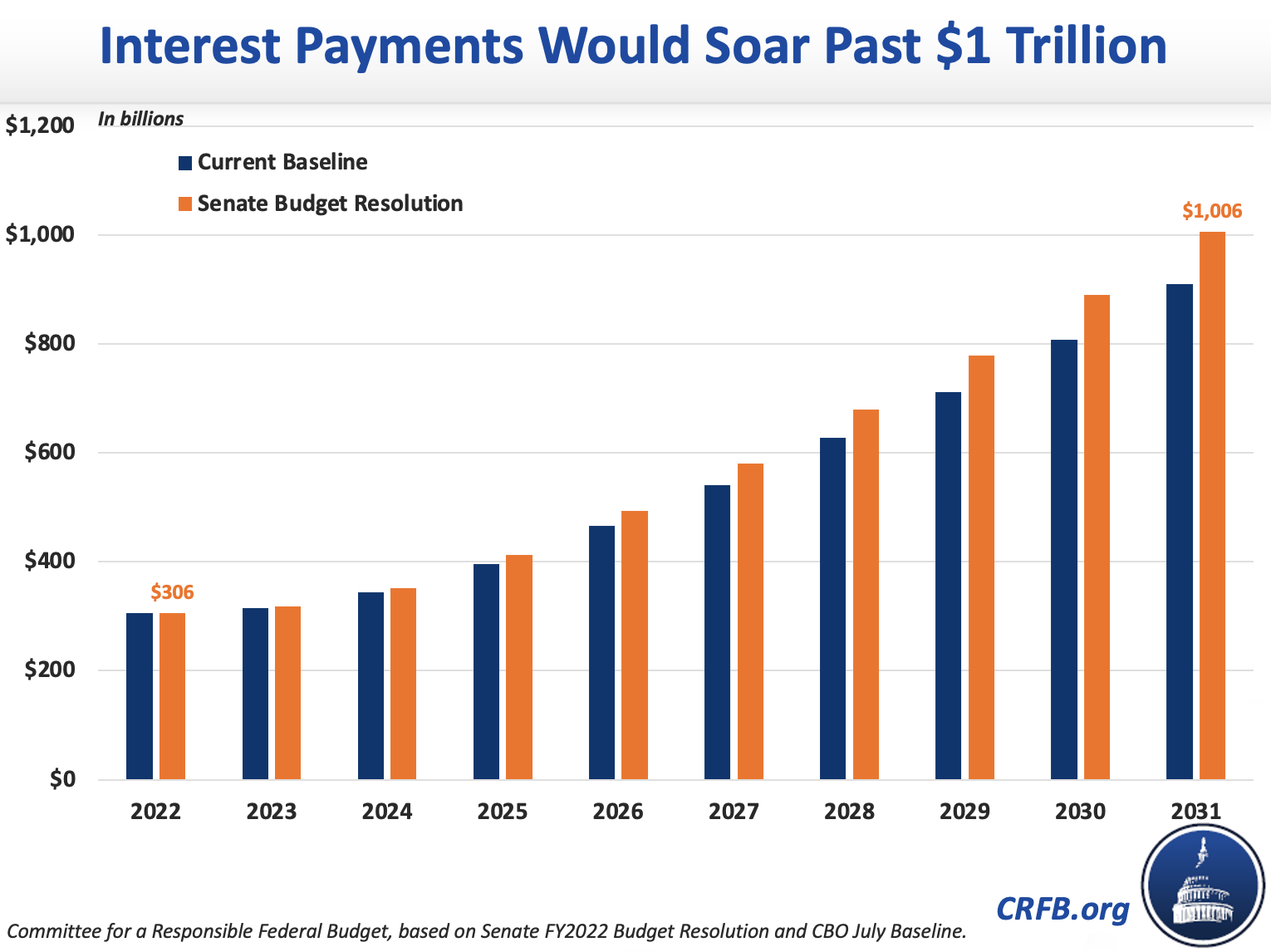The Budgetary Implications of the Senate Budget Resolution
The recently released fiscal year (FY) 2022 Senate budget resolution provides reconciliation instructions allowing for deficit increases of up to $1.75 trillion over ten years. The budget resolution also sets overall targets for spending, revenues, deficit, and debt levels over the course of the ten-year budget window through 2031. Under the budget resolution, total spending would increase by $4.2 trillion and debt would rise commensurately, reaching a record level as a share of GDP in 2026, rather than in 2031 as under the current baseline, and would reach 119 percent of GDP by the end of the decade.
Though the resolution adds $3.5 trillion in new mandatory spending, the Senate Finance Committee reconciliation instructions to reduce deficits by at least $1 billion mean that at least half of this new spending will be offset. Assuming $1.75 trillion of net new mandatory spending under the reconciliation plan, debt would reach 113 percent of GDP by the end of the decade.

Under the budget resolution, revenues over the ten-year period through FY 2031 are the same as those projected in the Congressional Budget Office's (CBO) July baseline (though the Finance Committee's instruction for $1 billion in deficit reduction will mean actual revenues will be higher). The $4.2 trillion in increased spending over the period reflects a $3.5 trillion increase in mandatory spending, the net effects of the bipartisan Infrastructure Investment and Jobs Act, a $263 billion increase in discretionary spending, and a $390 billion increase in spending on net interest payments.
Spending would average 23.4 percent over the ten-year window, compared to 22.0 percent in the CBO's July baseline, or 1.4 percentage points higher than current projections. For context, the historical average for federal spending is 17.3 percent of GDP.

Spending on net interest would increase by $390 billion over the period from the current baseline, from $306 billion in FY 2022 to over $1 trillion in 2031 — equivalent to about half of all Social Security spending in the final year.

The Senate's FY 2022 budget resolution and reconciliation instructions therein set the stage for President Biden's Build Back Better plan and other priorities which could add as much as $4.2 trillion to deficits over the coming decade. Rather than laying the groundwork to put debt on a stable and downward path relative to the economy, the Senate's budget blueprint would see debt increase to 119 percent of GDP by 2031 and would blow past prior records as a share of the economy in just five years' time. We hope that lawmakers will consider offsetting much or all of the increases in mandatory spending under the latest reconciliation plan in order to help get us back on the path toward fiscal sustainability.
Read more options and analyses on our Reconciliation Resources page.


